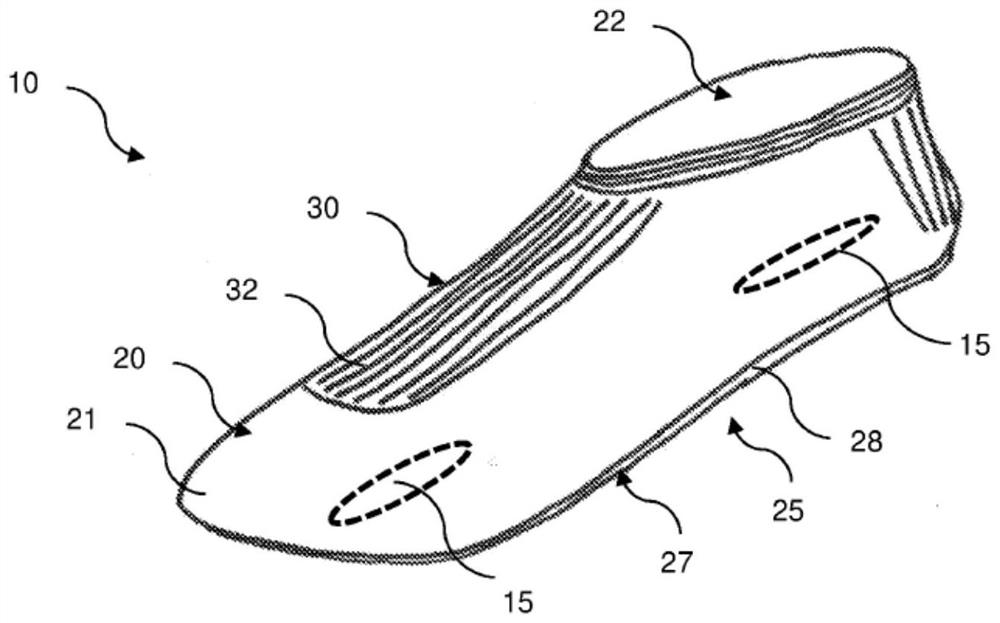Sensor support for arranging on a prosthesis
A technology of sensors and prostheses, applied in prosthesis, medical science, artificial arms, etc., can solve problems such as difficult to realize, time-consuming adaptation and familiar prosthesis, expensive prosthetic system, etc.
- Summary
- Abstract
- Description
- Claims
- Application Information
AI Technical Summary
Problems solved by technology
Method used
Image
Examples
Embodiment Construction
[0060] figure 1 A sensor carrier 10 is shown for arrangement on a prosthesis or a prosthesis part, wherein this prosthesis is, for example, an artificial foot. The sensor carrier 10 comprises a base body 20 consisting of a knitted fabric tube 21 which is closed at the (front) hose end and which has a fabric tube opening 22 at the (rear) hose end opposite the closed hose end . The base body 20 has a sensor section 25 with the sensor 15 (which is only shown symbolically) and a holding section 30 with a first knit structure 32 which enables the base body 20 to be fixedly held on the prosthetic component. The sensor section 25 has a different knit structure 27 than the first knit structure 32 , which enables a secure positioning of the sensor 15 relative to the prosthetic component. Arranged in the sensor section 25 is a sensor layer 28 in which the sensors 15 are arranged structured or systematically. Knitted structure 27 consists of durable synthetic fibers with a yarn thick...
PUM
 Login to View More
Login to View More Abstract
Description
Claims
Application Information
 Login to View More
Login to View More - R&D
- Intellectual Property
- Life Sciences
- Materials
- Tech Scout
- Unparalleled Data Quality
- Higher Quality Content
- 60% Fewer Hallucinations
Browse by: Latest US Patents, China's latest patents, Technical Efficacy Thesaurus, Application Domain, Technology Topic, Popular Technical Reports.
© 2025 PatSnap. All rights reserved.Legal|Privacy policy|Modern Slavery Act Transparency Statement|Sitemap|About US| Contact US: help@patsnap.com



